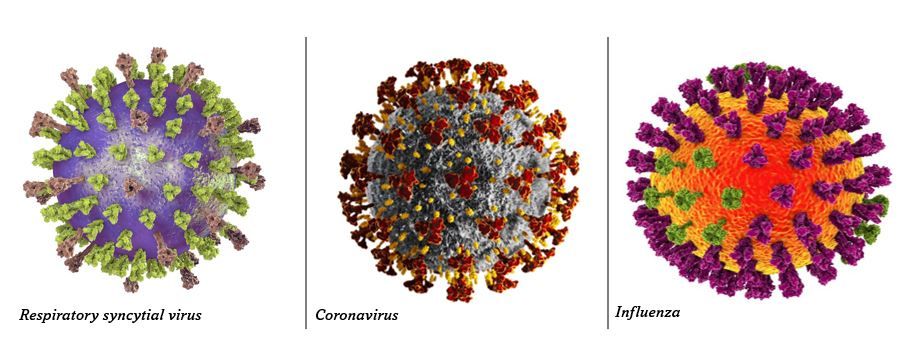- Clinical Technology
- Adult Immunization
- Hepatology
- Pediatric Immunization
- Screening
- Psychiatry
- Allergy
- Women's Health
- Cardiology
- Pediatrics
- Dermatology
- Endocrinology
- Pain Management
- Gastroenterology
- Infectious Disease
- Obesity Medicine
- Rheumatology
- Nephrology
- Neurology
- Pulmonology
Brush up on RSV: Symptoms, Risks, and Treatment
©Artur/Kateryna_Kon/adobe stock

Primary care clinicians should be on the lookout for respiratory syncytial virus (RSV) as infections increase around the country.
In recent weeks, news outlets have been reporting on increasing RSV case counts at children’s hospitals. RSV infects the lungs and breathing passages and usually causes mild, cold-like symptoms, with most people recovering in a week or 2, according to the US Centers for Disease Control and Prevention (CDC).
However, “RSV can be serious, especially for infants and older adults,” causing bronchiolitis and pneumonia in children younger than a year old, according to CDC.
The CDC, American Lung Association (ALA), American Academy of Pediatrics (AAP), and other experts have published resources to help recognize RSV and treat patients with it.
RSV is out there
RSV in common – so much that in the United States, nearly all children have been infected by age 2 years. Each year, it causes about 58 000 hospitalizations among children aged 5 years and younger, and is estimated to cause about 14 000 deaths a year in US adults aged ≥65 years, according to the National Institute of Allergy and Infectious Diseases.
In the United States, peak RSV season tends to be fall, winter, and spring. But there was a surge in summer 2021 and the Cleveland Clinic noted a bump in summer this year.
Who’s at risk among children?
Most healthy infants and young children with RSV do not need hospitalization, but children with underlying conditions are considered at high risk, according to CDC:
- Premature infants
- Very young infants, especially those aged ≤6 months
- Children younger than age 2 years with chronic lung disease or congenital heart disease
- Children with suppressed immune systems
- Children who have neuromuscular disorders, including those who have difficulty swallowing or clearing mucus secretions
What to look for
AAP listed symptoms to look for:
- Cold-like symptoms could indicate an upper respiratory tract infection and may include:
- Fever (temperature of ≥100.4°F)
- Cough (dry or wet sounding)
- Congestion
- Sneezing
- Runny nose
- Fussiness
- Poor feeding
With bronchiolitis, lower respiratory tract infection symptoms may include cold symptoms, along with:
- Fast breathing
- Flaring of the nostrils
- Head bobbing with breathing
- Rhythmic grunting during breathing
- Belly breathing, tugging between their ribs, and/or tugging at the lower neck
- Wheezing
Who’s at risk among adults?
Adults infected with RSV may have no symptoms or may show symptoms consistent with an upper respiratory tract infection which can include rhinorrhea, pharyngitis, cough, headache, fatigue, and fever. Adults may show more severe symptoms consistent with a lower respiratory tract infection, such as pneumonia.
According to CDC, those at high risk for severe illness include:
- Older adults, especially those aged ≥65 years
- Adults with chronic lung or heart disease
- Adults with weakened immune systems
How long does it last?
In children, symptoms generally last 5 to 7 days, according to AAP. In adults, the disease usually lasts less than 5 days, according to CDC.
Is it RSV or COVID-19?
Clinical symptoms of RSV are nonspecific and can overlap with other viral or bacterial respiratory infections. Several tests are available to confirm RSV infections, according to CDC.
“Both rRT-PCR and antigen detection tests are effective methods for diagnosing RSV infection in infants and young children,” according to CDC.
For older children, adolescents, and adults, highly sensitive rRT-PCR assays are commercially available for RSV. In all instances, healthcare providers should consult experienced laboratorians for more information on interpretation of results.
What are the treatments?
There is no vaccine against RSV and there is no cure for it. Acetaminophen or ibuprofen (for children aged >6 months) may help low-grade fevers, according to AAP.
The US Food and Drug Administration has licensed palivizumab for reduction of serious lower respiratory tract infection caused by RSV. CDC cited the AAP’s updated guidance for using that drug.
How does RSV spread?
The National Institutes of Health notes RSV is contagious and it spreads:
- In the air by coughing and sneezing
- Direct contact, such as kissing a child with RSV
- Touching an object or surface with the virus on it, then touching your mouth, nose, or eyes
How do we stop the spread?
CDC notes many of the measures that slow the spread of other contagious viruses also work against RSV. Tell your patients and staff to:
- Wash your hands often with soap and water for at least 20 seconds. If those are not available, use an alcohol-based hand sanitizer.
- Avoid touching your eyes, nose, and mouth with unwashed hands.
- Avoid close contact, such as kissing, and don’t share cups or eating utensils with people who have cold-like symptoms.
- Cover your mouth and nose with a tissue or your upper shirt sleeve when coughing or sneezing. Throw the tissue in the trash afterward.
- Clean and disinfect surfaces and objects that people frequently touch, such as toys, doorknobs, and mobile devices.
- Stay home when you are sick
